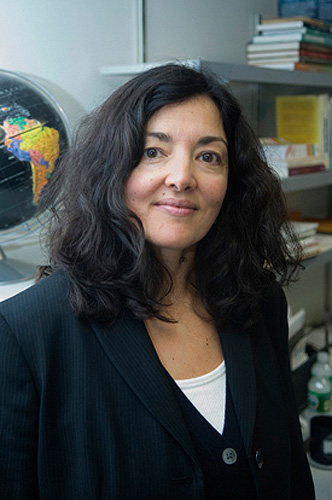
Monsoon areas of the world may experience wetter, later monsoon seasons following longer periods of drier weather, all due to global climate change, according to a new study led by Anji Seth, assistant professor of geography in the College of Liberal Arts and Sciences, and colleagues at other universities.
Once the wet season arrives, it is likely to rain more, but it may take longer for the rains to get started, she says.
The longer, drier transition period and the wetter monsoon season would have implications for agriculture, as the dry season and higher temperatures deplete moisture and a shorter monsoon season brings more rainfall in less time.
“Changes tend to pose challenges,” Seth says, noting that the monsoon regions are also major agricultural regions.
In the Southern Hemisphere, monsoon rains generally begin in October and peak from December through February. In the Northern Hemisphere, they usually occur from June to September.
Results of the study were published Nov. 10 in Climatic Change Letters and were featured in the Nov. 30 Research Highlights section of the online journal Nature Climate Change.
The study was conducted with colleagues of Seth’s at the Los Alamos National Lab, the University of Chile, and Columbia University.
“I would consider this an early result,” Seth says, adding that more research is needed to understand the mechanism of what is happening and the plausibility of the results.
The researchers examined climate model data for the last 30 years to show the present-day climate and projections for 30 years at the end of the 21st century.
They used a data set with 24 global climate models projecting what would happen assuming higher CO2 emissions, which gave them a clearer picture of changes. That scenario also reflects what will happen unless emissions are controlled.
A recent analysis showed that current C02 emissions are actually higher than the highest CO2 scenario in the models, she says, “so it’s not an unreasonable thing to look at.”


